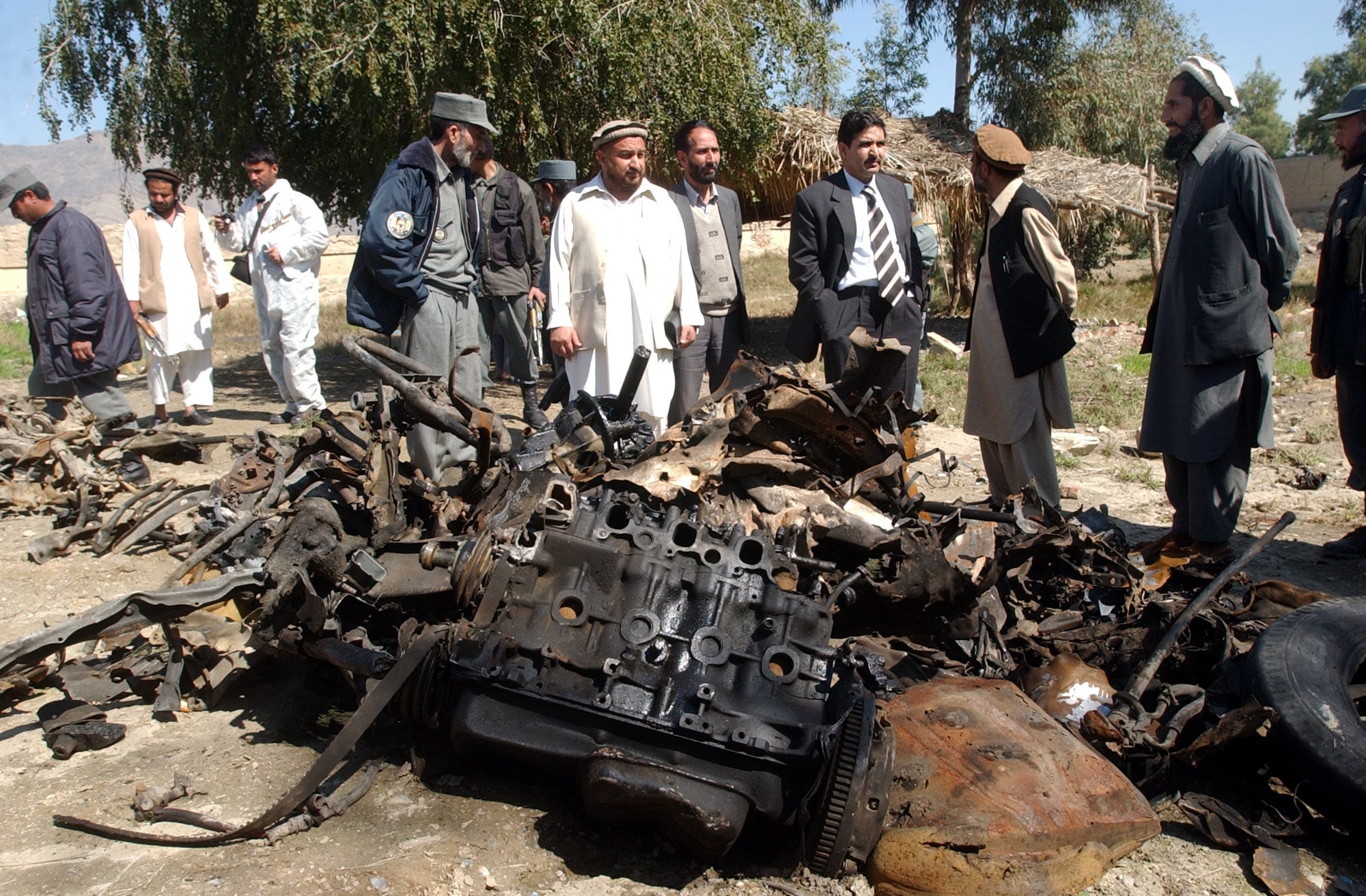THE MARINES SURVIVED THIS NIGHTMARE, BUT NO ONE BELIEVED THEIR STORY
Editor’s note: This is the third in a five-part series.
The attack still replays in high definition: The van approaches, then makes a hard, tire-shrieking turn into the convoy. It’s loaded with enough fuel and firepower to kill everyone in at least one of the Marines’ six humvees. Those closest figure they are goners.
The turret gunner, Sgt. Josh Henderson, was partially exposed when a roar of fire and smoke swallowed him and the four others inside. In that instant some thought about their families, and how the military would inform them their kids had died on a highway in Nangarhar province, Afghanistan. Armed insurgents watched from both sides of the road, poised to finish the job — or die trying.
The Marines had never seen such a massive fireball. “Oh my God,” the patrol commander thought. “All of my men are dead.” From his vantage point directly behind the targeted humvee, the second in their procession, this was a perfectly reasonable assumption. If any Americans had died that day, March 4, 2007, it’s likely no one would have questioned what happened next.
But when the smoke started to settle and Henderson re-emerged behind his M240G medium machine gun, the sound of incoming small-arms fire set off a series of events that would metastasize into a war crimes investigation and the unprecedented decision by an American general to evict the Marines’ entire 120-man unit from Afghanistan. They’d been on the ground for barely one month.
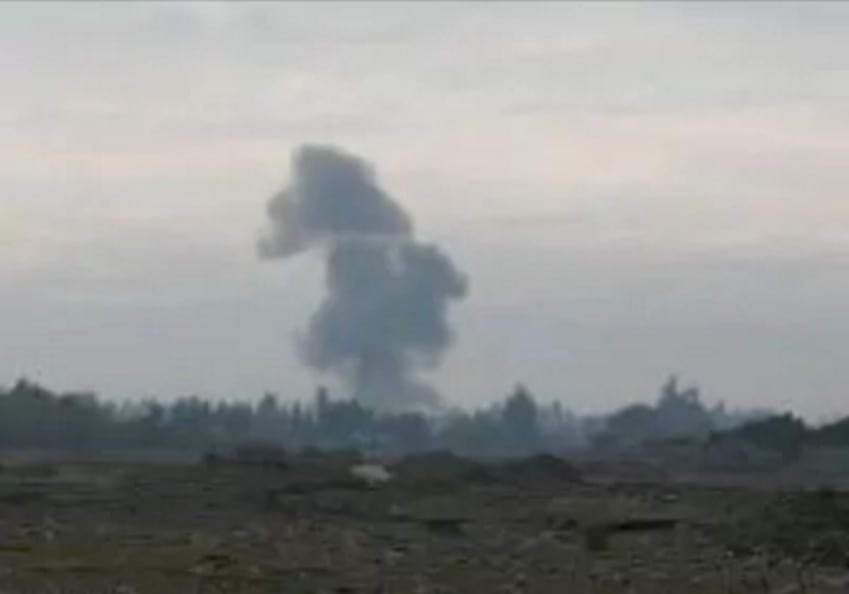
As detailed in this series’ first two installments, the attack and subsequent ambush involved 30 members of what was then the Marine Corps’ brand-new commando force, MARSOC, which conducts high-speed, low-key missions at the direction of U.S. Special Operations Command. They were assigned to Marine Special Operations Company Foxtrot, the first MARSOC unit ever deployed into combat. And over the next year their lives would become a living hell as military investigators zeroed in on seven of these men, and prosecutors built a case to put them in prison for the alleged deaths of nearly two dozen innocent Afghans.
READ PART 2: The generals resisted MARSOC. Their Marines paid the price
READ PART 4: Embattled Marines came under fire — on the home front
READ PART 5: Now on the outside, betrayed Marines fight to recapture their stolen honor
Eventually they were cleared of wrongdoing during the ambush. No one went to prison. The Marine Corps convened a rare court of inquiry to fully examine why Fox Company’s deployment was brought to such a quick and inglorious end. That court would determine that while the unit’s leaders exhibited poor judgment in the days after the attack, the Marines responded correctly to the ambush and ultimately became victims of their higher headquarters’ indifference, incompetence and impatience.
The court’s proceedings, overseen by a panel of three senior Marine Corps officers, spanned three weeks in January 2008. Its findings are outlined in a newly declassified 98-page report provided to Military Times — along with nearly 2,000 pages of supplemental materials — by Fox Company’s commander on that deployment, Maj. Fred Galvin, who retired from the service in 2014. Additional insights were gleaned through interviews with Fox Company Marines and others familiar with their case, many of whom agreed to share their stories on the condition of anonymity as some still hold sensitive jobs within the Defense Department and elsewhere in the federal government. Others cited lingering fears of violent retaliation by enemies affiliated with those they encountered on the battlefield eight years ago.
Fox Company had a call sign, “Violent,” derived from the Marine Corps’ doctrine on warfighting. “The essence of war is a violent struggle between two hostile, independent and irreconcilable wills,” the manual states. It references the term more than two dozen times, Galvin noted. To Galvin, that encapsulated what Fox Company would need to understand and embrace about its mission in Afghanistan. “War is very active,” he said. “It’s not clean or precise. The enemy can hurt you. It needed to be understood by our men that this is what we were going to do. It’s not a lovely thing when you’re fighting another human being who’s trying to kill you.”
Galvin’s superiors disapproved of the name and told him to change it. “Break stuff and kill things, sure, that’s the Marine Corps’ mantra. But special forces is different,” said a senior MARSOC officer critical of Galvin’s selection to the lead the command’s first combat unit. Special operations forces, he said, are expected to be quiet professionals. “Fred gets his shot and comes up with ‘Task Force Violent’? What message does that send to our partners and counterparts in whose area we have to operate?”
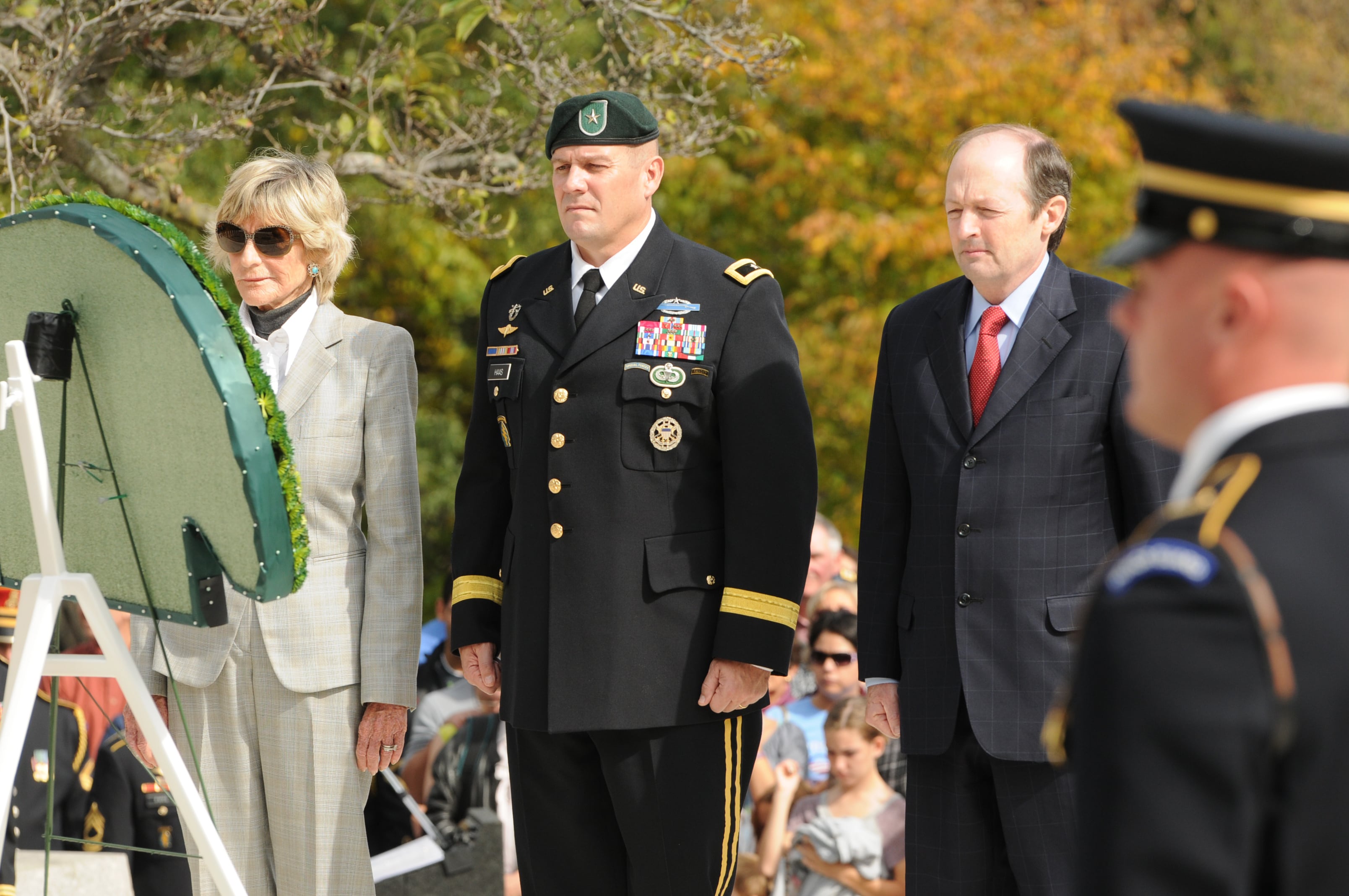
Maj. Gen. Christopher Haas was a colonel in 2007 when he led the Combined Joint Special Operations Task Force in Afghanistan. Friction between his staff and Fox Company precipitated the Marines’ eventual ouster from the war zone.
For Fox Company, those areas were overseen by Army Col. Christopher Haas, commander of the Combined Joint Special Operations Task Force for Afghanistan, and Army Col. John Nicholson, commander of Task Force Spartan. Haas directed all special forces activity in theater. Nicholson owned the “battle space” surrounding Afghanistan’s border with Pakistan, where Task Force Violent would operate. Both men are generals now.
Haas and his staff with the CJSOTF (pronounced “see-juh-so-tiff”) had operational control of Fox Company, meaning they approved Galvin’s missions. But the Marines couldn’t go anywhere without coordination with Nicholson’s team, which had “veto power” over any proposed activity in its area of responsibility. This arrangement proved problematic for everyone, and a major reason for the confusion and frustration that preempted Fox Company’s eviction from Afghanistan, the court of inquiry determined. It was further hampered by Fox Company’s liaison to the CJSOTF, Marine Maj. Scott Ukeiley, whose alleged failures and communication deficiencies contributed significantly to Fox Company’s rotten relationship with Haas and Nicholson, the court’s report shows.
Fox Company arrived in early February 2007, transiting through Bagram Airfield where the CJSOTF was headquartered. There was immediate friction between the two staffs, the court’s report notes. Haas and his team were nearing the end of their deployment and intently focused on providing a smooth transition for their replacements. Compounding this, senior leaders within Special Operations Command made a late decision to employ Fox Company in Afghanistan — so late, in fact, that when the destination was finally announced, the unit and its equipment were already loaded on the Navy ships bringing them overseas. As a result, the court concluded, Haas and his staff “did not fully understand its capabilities and limitations and therefore did not understand how to properly employ” Fox Company.
Haas, now a two-star general serving as director of force management and development at SOCOM headquarters in Florida, agreed to address questions via email and through a spokesman. The CJSOTF had no information about Fox Company’s force structure or core capabilities before the Marines arrived, he said. The Marines’ mission was “to fill a critical gap in southern Nangarhar Province for Task Force Spartan by replacing the French special operations task force” that had moved out several weeks prior.
Haas said he and his staff gave Galvin and his leadership team a detailed briefing explaining the missions they’d be assigned while in Afghanistan. In order of priority they were: reconnaissance, counterinsurgency and foreign internal defense (i.e. training Afghan security forces), and direct-action special-reconnaissance operations — that is, the pursuit of high-value enemy operatives. Through his spokesman, Haas said they were together at Bagram about one week. Galvin says the CJSOTF staff made clear that his Marines were to conduct “aggressive combat operations.”
THE BATTLE SPACE: Fox Company arrived in Bagram, Afghanistan, in February 2007 and soon shipped out to Jalalabad Airfield in Nangarhar province.
Fox Company departed Bagram for Jalalabad Airfield where they would establish Camp Raider, a namesake intended to honor the first-ever Marine commandos who are revered for their fearlessness during some of World War II’s most grisly engagements in the Pacific. When they arrived, however, the place was a dump. Electricity was spotty at best, the court’s report says. There were no sleeping quarters. The Marines would have to identify, vet, train and contract a group of local Afghans to serve as security guards. They even had to hunt down someone to collect their trash. And when one of the unit’s medics inspected the camp’s water supply, he found their well was contaminated with fecal matter — a parting gift from the French, Galvin surmised.
By far, Fox Company’s most dire and problematic shortcoming was its lack of internal logistical support. Despite Galvin’s detailed and persistent requests stretching back nearly a year, MARSOC headquarters failed to provide the necessary personnel, rendering the unit completely dependent on the CJSOTF for food, ammunition, replacement parts for their humvees and weapons — absolutely everything. The CJSOTF was “accommodating,” the court’s report says, but ultimately unprepared to provide the wholesale sustainment the Marines required.
Through his spokesman, Haas said that his staff inspected the facilities at Camp Raider and determined what repairs were required. “They also drew Fox Company’s up-armored vehicles and crew-served weapons, and prepositioned them at the Jalalabad Airfield,” he said. ”... CJSOTF-A provided cooks who opened and operated Fox Company’s mess hall. They also provided a forklift driver and a vehicle mechanic.”
Galvin says Fox Company all but begged Haas’ staff for food and other vital supplies — and that their requests were ignored. Haas, through his spokesman, disputed that claim. Fox Company, he said, was treated “like every other CJSOTF subordinate unit.”
“I respectfully disagree,” said Derik Erickson, the Army logistics officer who was detailed to Afghanistan from Fort Bragg, North Carolina, when officials realized Fox Company arrived in the war zone with no internal support. “I can’t speak for every single unit the CJSOTF supported. Maybe others were treated like shit, too, but I doubt it because most of them were Army [special forces] units. Fox Company was a redheaded stepchild.”
Yes, there was bottled water and MREs, short for “meals ready to eat,” the flavorless pre-packaged and preservative-laden rations troops consume when they’re far removed from a robust supply chain. But after more than five years of war in Afghanistan, Jalalabad Airfield, with its proximity to the Tora Bora mountains, was a well-established, well-supplied launch pad for the American government’s multidimensional campaign to unearth intelligence about bin Laden’s whereabouts. It was, Erickson said, a “mature theater.” The Navy SEALs who were based there didn’t have to eat that crap. Why did the Marines?
The nucleus of Nicholson’s Task Force Spartan, also headquartered at Jalalabad Airfield, comprised the 3rd Brigade of the Army’s 10th Mountain Division. Compared to the CJSOTF’s support apparatus in Bagram, these guys had robust infrastructure. Because support from Bagram was not readily forthcoming, the crafty logistician struck deals with the 10th Mountain Division however and whenever he could. But when the CJSOTF’s support battalion learned he was bypassing protocol, “you’d have thought I committed a mortal sin,” Erickson said. “I got angry phone calls asking ‘what the ‘F’ are you doing?’” Then they sent some food supplies to the Marines — a bulk shipment of mostly flour and oil. “It’s like they cleaned out a back room and threw it in a truck so they’d shut up,” Erickson added. “I looked at it and said: ‘What am I supposed to do with this? We don’t have any cooks for God’s sake.‘”
Erickson remembers seeing the Marines’ convoy arrive back at the base after the ambush March 4. Henderson, the turret gunner whose life was nearly extinguished by the suicide bomb blast, was hit in the arm by flying debris. The wound was minor, but his uniform was a torn, bloody mess. Erickson contacted the CJSOTF’s supply staff to requisition a new one. Sorry, they said. Talk to MARSOC. So he phoned MARSOC headquarters at Camp Lejeune in North Carolina. Staff there told him that he’d need to speak with the CJSOTF.
Eventually, Erickson got through to a sympathetic gunnery sergeant who agreed to take Erickson’s credit card number, drive over to the base exchange store, purchase Henderson’s replacement uniform and ship it to Jalalabad.
The effort proved moot: Fox Company was kicked out of Afghanistan before the replacement uniform arrived. No one wanted to help these guys, Erickson said. “Here’s me and this gunny, doing it the wrong way to get this kid his uniform because we couldn’t do it the right way,” he said, laughing slightly at the incredulity of it all. “The Army let these guys down, and so did the Marine Corps.”
A BLESSING AND A CURSE
The convoy pushed out around 6 a.m. for an approved three-phase mission expected to last several hours. Each humvee held five men and at least one crew-served weapon. The Marines were members of Fox Company’s direct action special reconnaissance platoon, and most were experienced combat veterans culled from the Marine Corps’ elite 2nd Force Reconnaissance Company, which was deactivated as MARSOC was brought online.
It was slightly overcast. The late-winter air was damp and crisp. Visibility was fine. Driving east along Highway 1, they passed through a handful of small villages, including Bati Kot, where the final phase of their mission called for a meeting with tribal elders intended to help the Marines draw a bead on enemy activity in the area. Men, women and children were out, mixing with vendors. Routine, the Marines would recall, uneventful.
They continued east toward the Pakistan border and Forward Operating Base Torkham, an important U.S. outpost at the foot of the Tora Bora mountains. Much of the American military’s food, fuel and other supplies were trucked into Afghanistan via the border crossing. Recognizing its strategic importance, the Taliban launched regular attacks there. The region also served as a way station for suicide bombers and other extremists. The mountains harbored all manner of troublemakers and enemy intelligence.
Plans called for a brief meeting with the Army’s 66th Military Police Company. Galvin sought permission to stage a quick reaction force at FOB Torkham that could be called upon should a fight break out during future reconnaissance patrols up in the mountains. From there, they’d scope out prospective insertion points along the base of the mountains before heading back to Bati Kot.
Upon rolling into the village, the Marines observed a much different scene. Military-age men lined both sides of the road. They appeared “unfriendly and quiet,” Galvin recalled. Riding in the last of the six humvees, he said aloud that he believed an attack was imminent. Those words were hardly out of his mouth when the bomber struck.
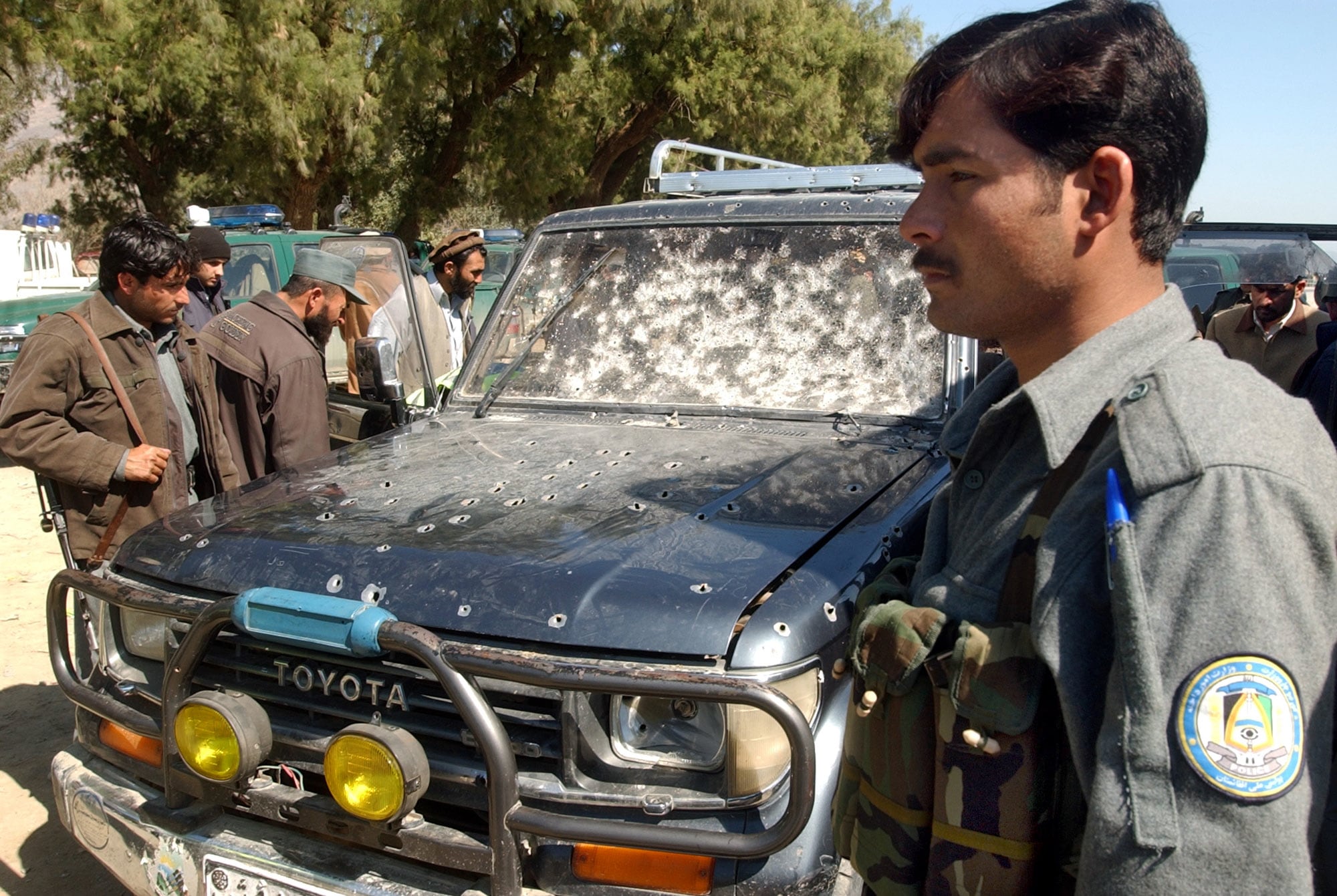
The van’s driver, strapped with explosives that would ignite the additional fuel he was carrying, wedged his vehicle between the first two humvees and set off the massive fireball, bringing the entire convoy to a halt. From about 50 yards away, just south of the highway, insurgents opened fire from inside a blue Toyota Prado that was quickly approaching, Marines told investigators later. They fired back using “controlled bursts.” More small-arms fire came in from the north side of the road, and then again from the south. The Marines fired back again and again. It was a complex ambush.
Galvin and the platoon commander, Capt. Vince Noble, alerted Fox Company’s operations center at Jalalabad and higher headquarters at Bagram that they’d encountered a “SVBIED,” a suicide vehicle-borne improvised explosive device. At Bagram, a watch officer in the CJSOTF’s operations center announced the attack and asked who was involved, according to the court’s report. Ukeiley, as Fox Company’s liaison to the CJSOTF, should have engaged. Instead, when the announcement was made, he made no attempt to confirm whether Fox Company was the unit under attack, the court’s report says. “Maj. Ukeiley went to the break room,” it states.
In Jalalabad, a Marine in Fox Company’s operations center received messages from Galvin and the patrol commander. “VBIED, SAF,” or small arms fire, Galvin’s read. “RETURNED FIRE BROKE CONTACT NO CASUALTY REPORT NO VISIBLE BDA,” or battle damage assessment. CONTACT FROM ENEMY WAS FROM BOTH SIDES OF THE ROAD.” The Marine forwarded the message to Ukeiley via secure email but received no response, he testified. He then tried calling Ukeiley on a secure line but received no answer. He finally reached Ukeiley via unsecure cell phone. “Ukeiley,” the court report says, “was still in the break room.”
Once back at his desk, Ukeiley responded to the email, copying several officers within the CJSOTF headquarters — but not the commander Haas, according to the court’s report. Haas told the court that he was frustrated with Fox Company for not being more timely in communicating to him what was unfolding out on Highway 1.
Citing Ukeiley’s “actions and inactions” that day, the court recommended he be charged with dereliction of duty. One of the panel’s three officers, Lt. Col. Steve Morgan, further advocated that Ukeiley be formally shunned by the Marine Corps. Neither happened. The Marine general who reviewed the court’s recommendations, Lt. Gen. Samuel Helland, disagreed with these specific findings. Ukeiley declined Military Times’ interview request but provided the following statement about his characterization in the court’s report. “I was aware of the COI’s report upon its release in 2008, strongly disagreed with the panel’s portrayal as to my performance, and presented my rebuttal through official correspondence and my chain of command.” He retired from the Marine Corps in 2013.
When it was clear none of the humvees was disabled, the patrol commander decided to abort the mission’s final phase and return to base. Marines in the third and fourth humvees would testify that they saw AK47s on the ground as they rolled past the Toyota Prado. Marines in the last humvee told investigators and the court that they took fire from the vicinity of the Prado as they drove past it.
The ride back to Jalalabad was tense. As the Marines hustled to get free of the danger, they hurled rocks and fired disabling shots at a few oncoming cars, a common warzone practice meant to keep the convoy moving and avoid being pinned in and attacked. Warning shots were fired to disperse a crowd and clear a path for the humvees — all in accordance with protocol, the court determined.
During Fox Company’s predeployment period, the Marines’ spent hours upon hours focusing on precision marksmanship and discriminating shooting scenarios using both personal and crew-served weapons, Galvin said. That included a six-week close-quarters battle course. Their training was centered on decision-making and safety, and throughout the 11-month predeployment period, Marines were on a range at least twice a week, said one of Fox Company’s more senior enlisted Marines. That pace only intensified once the deployment was underway. “Your skills diminish if not,” he added.
Like Galvin, he remains insulted by the suggestion, made by a military investigator, that his Marines were frightened by the suicide attack, lost their cool in its aftermath and fired haphazardly at anything moving. No way, he said. These men were experienced in combat, thoroughly trained and highly disciplined. “I didn’t have a bunch of cowboys,” he added, “because I wouldn’t tolerate it.” Indeed, the officers presiding over the court of inquiry would conclude that the Marines’ actions March 4 were “appropriate and in accordance with the law and established procedures.” Fox Company’s command climate, they said “properly enforced the discriminate and proportional use of force.”
To the guys on the ground, however, such procedures caused tremendous anxiety. In Iraq, the Marines were equipped with nonlethal weapons, such as horns, flares and flashbangs, capable of disorienting and diverting potential threats without causing serious bodily harm. In Afghanistan, they shined flashlights at oncoming cars, waved their arms and threw rocks “because that’s the only thing we had,” said one member of the March 4 patrol. With Fox Company’s logistical shortfalls, there were no nonlethal weapons to be had, he said. Rock throwing was an escalation of force measure passed down from other special forces elements within the CJSOTF.
Afghan journalists arrived at the attack site instantly, followed by soldiers from the Army’s 66th Military Police Company who were instructed to cordon off the area and treat it like a crime scene. Initial media reports suggested the Marines, possibly intoxicated, left their vehicles and intimidated the media and other onlookers. That was false. A soldier with the 66th MPs did confront two journalists who’d breached the cordon, grabbing their cameras and erasing their contents, according to an investigation ordered by Nicholson, the battle-space commander, in response to Afghan complaints of aggressive treatment by American personnel.
Back at Jalalabad, as Galvin compiled after-action reports for higher headquarters, the story was spreading throughout the mainstream media that their Marines were suspected of killing noncombatants. Haas informed him there would be an investigation. The next day, on March 5, Galvin wrote an email to three men he considered mentors, veterans with ties to the Marine Raider and Force Reconnaissance communities. He sought to assuage any concerns that he and his men had acted dishonorably in Bati Kot, telling them: “As you well know, one thing has never, nor will ever change about our enemy. They will exploit deception and information operations as best possible.”
“The media is probably mentioning several versions of the story,” Galvin’s email continued, relaying loose details about the ambush and how the Marines fought back. “We have one version and it’s the truth from our men and myself who were there. … Our men did an amazing job, none sustained more than a scratch and we killed several people who were trying to kill us. The investigation will prove exactly that. … Let the Raiders and Force Reconnaissance Marines and Corpsmen know that we will never let them down.”
The email, which Galvin provided to Military Times, quickly circulated within MARSOC, eventually finding its way to Lt. Col. Paul Montanus, the commander of 2nd Marine Special Operations Battalion and Galvin’s immediate superior. Montanus sent it to MARSOC’s public affairs officer and the second in command, who forwarded it to Maj. Gen. Dennis Hejlik, MARSOC’s top officer.
Hejlik was livid. Fourteen people, including Galvin and Montanus, were copied on his reply. The general felt that Galvin had violated operational security (“OpSec”) by referencing the unit’s tactics and procedures (“TPs”) and its Blue Force Tracker (“BFT”), visualization software that enables troops to see the location of friendly and enemy forces on the battlefield. “We have an ongoing investigation and we send this out to the world? What the hell happened to OpSec?” he wrote. “We are providing information to the enemy on how successful his TPs were and oh by the way we let him know POSITIVELY about BFT. I NEVER want to see this kind of bullshit again — ever! LtCol Montanus you get ahold of Maj Galvin and I want his email recalled — now! ... IF any of you have any doubts on how pissed off I am about this then you need to come and see me.”
Hejlik, who retired as a three-star general in 2012, did not respond to multiple requests seeking comment. Montanus, now a colonel who teaches at the U.S. Naval Academy, declined to be interviewed but provided Military Times with a written statement saying “everyone in MARSOC and the Marine Corps wanted, and did everything they could, for Fox Company to be completely and utterly successful.”
The senior MARSOC officer who criticized Galvin’s decision to name the unit Task Force Violent characterized Galvin’s email from Afghanistan as immature, saying that “under no circumstances could Fred perceive his actions would be incorrect.”
“What would prompt a guy to send out a note?” he said. “What part of our training, in terms of operational security, warrants writing your own tell-all?”
Galvin sees it differently. His command’s reaction to the email illustrates an eagerness to “destroy us,” he said. Did no one feel a responsibility to help prove that Fox Company’s Marines performed as trained and according to the rules of engagement? Nothing in his email to those three men was classified national security, Galvin insisted. The term Blue Force Tracker, sensitive military equipment to be sure, was easily searchable on the Internet even in 2007. Besides, Galvin said, if he had compromised operational security, then why was his email forwarded again and again on the Marine Corps’ unsecure network?
“There were no issues with that email when it was reviewed by the court of inquiry,” he said. “It states the same testimony that I and the other Marines have consistently stated from the time we returned from the patrol.”
The three senior officers overseeing the court proceedings concluded that between five and seven people were killed and another 24 to 28 were wounded as a result of the suicide attack, subsequent vehicle accidents and small-arms fire. More than a year later, after Helland approved the court’s recommendation to clear Fox Company of wrongdoing, the men on that patrol were awarded Combat Action Ribbons for their actions that day.
Henderson also received a Purple Heart for the wound he sustained in the bomb blast. He was the only Marine hurt that day. A blessing, and yet a curse. “If the ambush had gone the enemy’s way, God knows what would have happened,” said one of the men on the patrol. ”... When we got back to Jalalabad, I overheard an Army officer say he couldn’t believe such an ambush happened because no Marines came back in body bags.”
“That’s one thing I’ll take to my grave.”
A SUDDEN, UNCEREMONIOUS END
U.S. commanders in the region were in damage-control mode. At the request of Nangarhar’s governor, they agreed to freeze movement for two days along Highway 1 near the attack site. Additionally, Haas ordered Fox Company to stay out of Jalalabad, and all Marines who’d been on the March 4 patrol were benched, “except in exigent circumstances,” until further notice.
Galvin and Noble grew frustrated. The company’s intelligence arm had a good lead on three potential suicide bombers, but the CJSOTF would not approve the mission. “Criminal,” Galvin emailed Noble on March 8, according to the court’s report. “That we know where these guys are and they want to wait for them to blow us up before they get the point.”
Noble sent a heated, flippant response. “Maybe we should get drunk and go on patrol,” he wrote, a reference to the erroneous allegations, made by Afghan villagers, stemming from the March 4 incident. Though proven false, at the time those claims were taken quite seriously by the Marines’ commanders. ”... Our guys are expendable,” Noble’s email continued. “At least if we get blown up again, that’s one less suicide bomber for Nangarhar.”
Neither knew it, but Fox Company’s deployment was about to come to a sudden, unceremonious end.
Noble drafted plans for a reconnaissance mission, scheduled for the night of March 9, the exact nature of which remains sensitive, Galvin said. After the March 4 ambush and the Marines’ counterattack, Fox Company recognized a hostile enemy response was imminent, Galvin said. The enemy was planning to siege Camp Raider.
Noble knew that Fox Company was barred from operating in Jalalabad, so he “masked” the operation by falsely indicating in his request that the mission would take place south of Jalalabad, according to the court’s report. The CJSOTF approved the mission, as staff there understood it. But “the true intent,” the report says, ”… was to operate only in and around Jalalabad.”
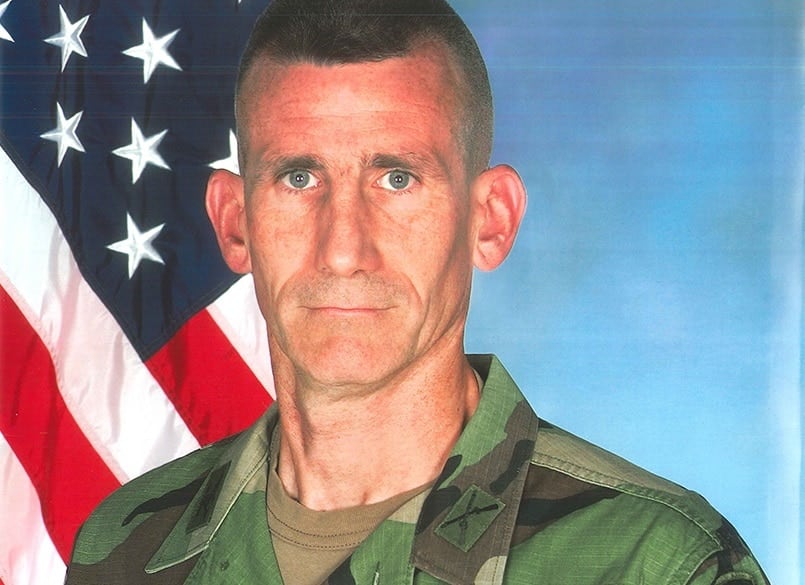
Two additional movements were planned: recovery of an enemy weapons cache and recovery of a five-ton truck that had become disabled. A pre-mission briefing was held outlining via PowerPoint the true objective in Jalalabad. Galvin, who was not present for the briefing, did not participate in the operation, though he had secured approval for select members of the March 4 patrol to do so. When Nicholson’s staff inquired with Fox Company about the mission, an officer in the Marines’ operations center sent them the PowerPoint.
The mission commenced, but soon Nicholson’s team contacted Haas’ team with a flurry of questions. Haas tracked down Galvin, who then went to Fox Company’s operations center only to find the display showing Noble’s intended route. “No, what the f---?!” he said. Haas wanted the operation recalled. Galvin immediately complied. It was too late, though.
Marines tasked with recovering the weapons were involved in a humvee rollover. An Afghan man suffered a minor leg injury as a result. The Marines set up a perimeter. When a vehicle approached, the Marines employed two “escalation of force measures,” including a single gunshot to disable it. The car’s windshield shattered, injuring an occupant. No evidence emerged to suggest this was an unjustified use of force, but it was not immediately reported.
The situation only deteriorated from there. The Marines out to recover the 5-ton truck encountered muddy terrain. Both vehicles rolled over on their sides when the brakes seized on the vehicle being towed. One member of the unit suffered a slight injury. “It was a long night,” Galvin said. “We were still dealing with this past when the sun came up, until about 10 in morning.”
When everyone made it back to base, Noble was hot. Initially, he instructed the Marines to lie about what happened should there be an investigation, the court’s report says. One of the unit’s senior enlisted Marines pulled him aside and said that would be inappropriate. Noble realized he was wrong and told the Marine to make certain everyone told the truth, the court’s report says.
“We submitted three missions for execution as soon as the travel ban was lifted,” Galvin said. “These were all approved by our higher headquarters as being appropriate. These missions were also sent to and received by our adjacent units. Every man in Fox Company gave their utmost on March 9 to prevent a determined enemy from attacking us. Did we have fumbles? Yes. But Raiders are ingrained to take the fight to the enemy, which was our focus. Every Marine and corpsman returned alive that night, and the imminent threat stopped until after we were expelled from Afghanistan.”
The court recommended that Noble face charges for providing false information to Galvin about the March 9 operation, for disobeying Haas’ order to stay out of Jalalabad and then asking his Marines to lie about the mission’s true location. Noble declined to discuss the matter with Military Times. The court, however, would say that “given his superior combat record and the mitigating action taken by him to correct his mistakes,” any disciplinary action should be handled administratively. That’s precisely what happened. Noble has two combat valor awards and a Purple Heart, which he received after suffering a near-fatal gunshot wound during the Iraq War’s notorious campaign in Fallujah. He and Galvin remain close friends.
Nicholson, who viewed the March 4 incident as a serious setback to his efforts win the locals’ trust, was exasperated. He emailed a complaint to his superiors, Army Maj. Gen. David Rodriguez and Army Brig. Gen. Joseph Votel. “Most disturbing,” he wrote, “is the deception regarding their real intent once they rolled out of the gate. I regard this as an integrity violation.” The message is summarized in the court of inquiry’s report. “In fact,” it continues, “I relieved a commander for an integrity violation of this nature. He will be out of the Army after his [non-judicial] punishment from you sir. The unit and this commander have broken the trust that must exist between units and commanders operating together on the battlefield. I therefore request that we redeploy this unit ASAP.”
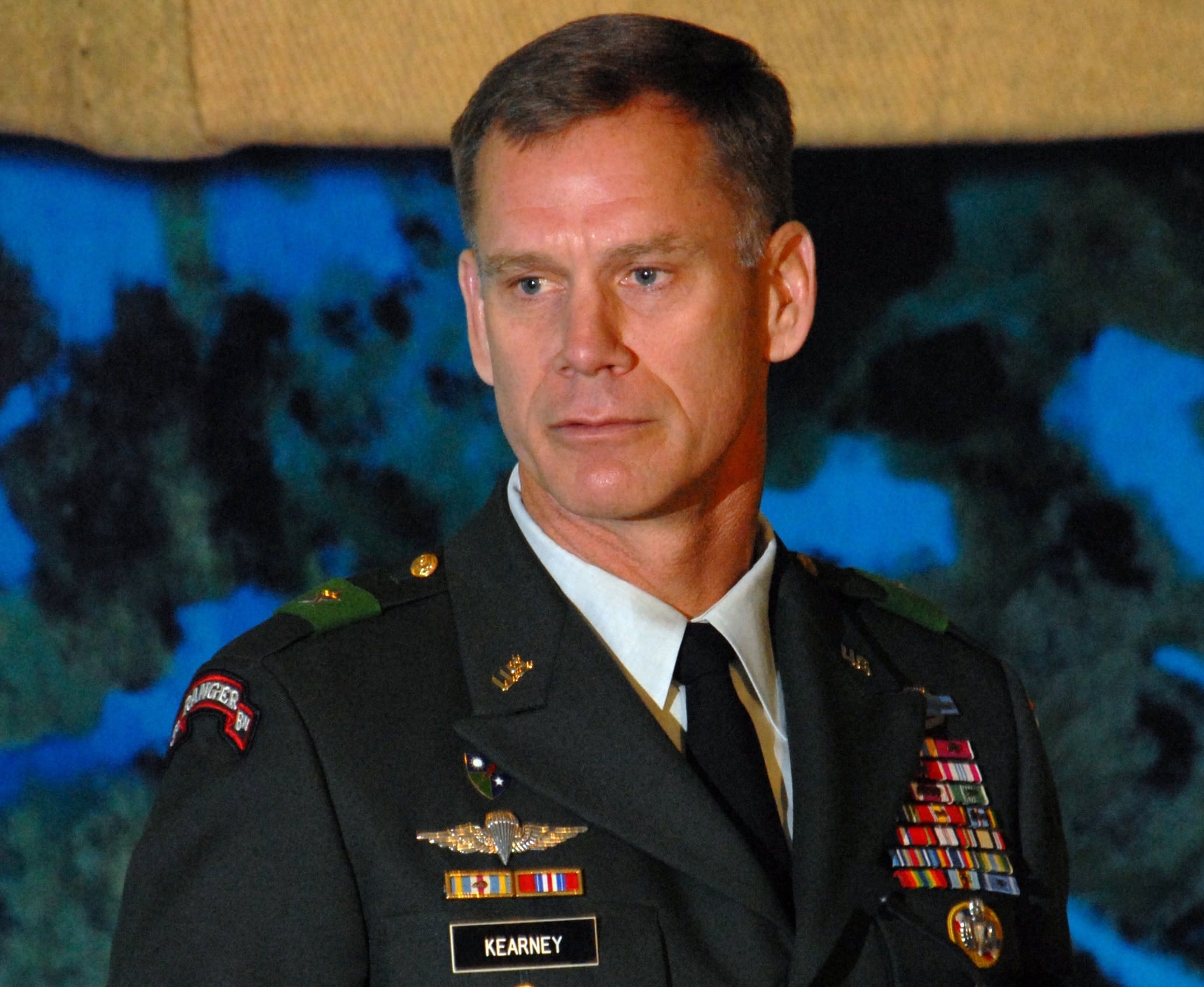
Early the next morning, Ukeiley emailed Galvin outlining what he perceived were Fox Company’s failures. Among other things, it suggested the Marines weren’t team players; that they communicated poorly; that Galvin had failed to effectively lead his unit; that, on the whole, the Marines had not worked within their designated counterinsurgency assignment. Unbeknownst to Galvin, Ukeiley provided several copies of this email to some senior officers, and one made its way to Army Maj. Gen. Frank Kearney, the commanding general of Special Operations Command Central, SOCOM’s delegate to U.S. Central Command.
Hejlik, MARSOC’s commanding general, reached out to Kearney saying by email that he was “at the 95 percent mark” of firing Galvin as Fox Company’s commander. “It’s your call on redeploying the unit,” he said, “but ask for your consideration — I know this is a very good company.” Kearney told Hejlik that the leadership in theater had lost confidence in Fox Company, the court report says.
Ukeiley’s email, the court determined, proved the catalyst for Kearney’s decision to evict Fox Company from Afghanistan. Haas and other leaders read it as fact whereas many of the failures Ukeiley outlined “were in reality his own and those of the CJSOTF-A staff” in Bagram, the court report says. Had Ukeiley taken the time to read the request outlining the March 9 mission, he could have answered the questions Haas and Nicholson posed about Fox Company’s planned activity that night in and around Jalalabad, the court report says. Those in charge could have canceled the mission before the Marines departed.
Nicholson, similarly, was hasty in asking Rodriguez and Votel to redeploy Fox Company, the report says. He never read the March 9 mission request that Fox Company’s operations center provided to his staff. If he had, he could have disapproved it, said Morgan, one of the three Marine officers who oversaw the court proceedings. Before he appeared as a witness during the court of inquiry, Nicholson was unaware the Marines were actually authorized for their March 4 mission through Bati Kot, Morgan said.
Nicholson is now a three-star general overseeing NATO Land Command in Turkey. His testimony during the court of inquiry remains classified, as do several others made by senior leaders at that time. As such, an Army spokesperson said, it would be inappropriate for the general to comment for this story.
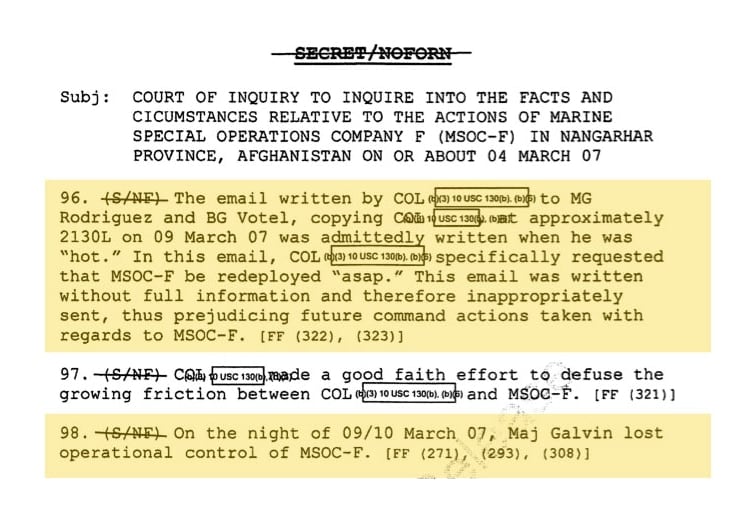
An excerpt from the court of inquiry's findings.
On March 11, 2007, Haas, the CJSOFT commander, sent Kearney a summary of Fox Company's perceived failures along with a PowerPoint titled "MSOC Challenges." It was developed from Ukeiley's email to Galvin and with his assistance. In his message to the general, Haas recommended Fox Company be sent home. Kearney issued the order later that day.
"Factually, the events of 04 March 07 and 09 March 07 are unrelated," the court concluded. "However, [higher headquarters] were unable to distinguish between the two events." Linking them led to diminished trust and confidence in Fox Company's ability to operate in Afghanistan.
Members of MARSOC's leadership team arrived in theater days later. Montanus, Galvin's commanding officer, relieved him of command. Galvin addressed his men one last time, saying only that his commanding officer had lost trust and confidence in him. The military's investigation was underway. Galvin, who saw storm clouds forming, was headed home to find lawyers for him and for his men.
Andrew deGrandpre is Military Times’ digital news director. On Twitter: @adegrandpre
